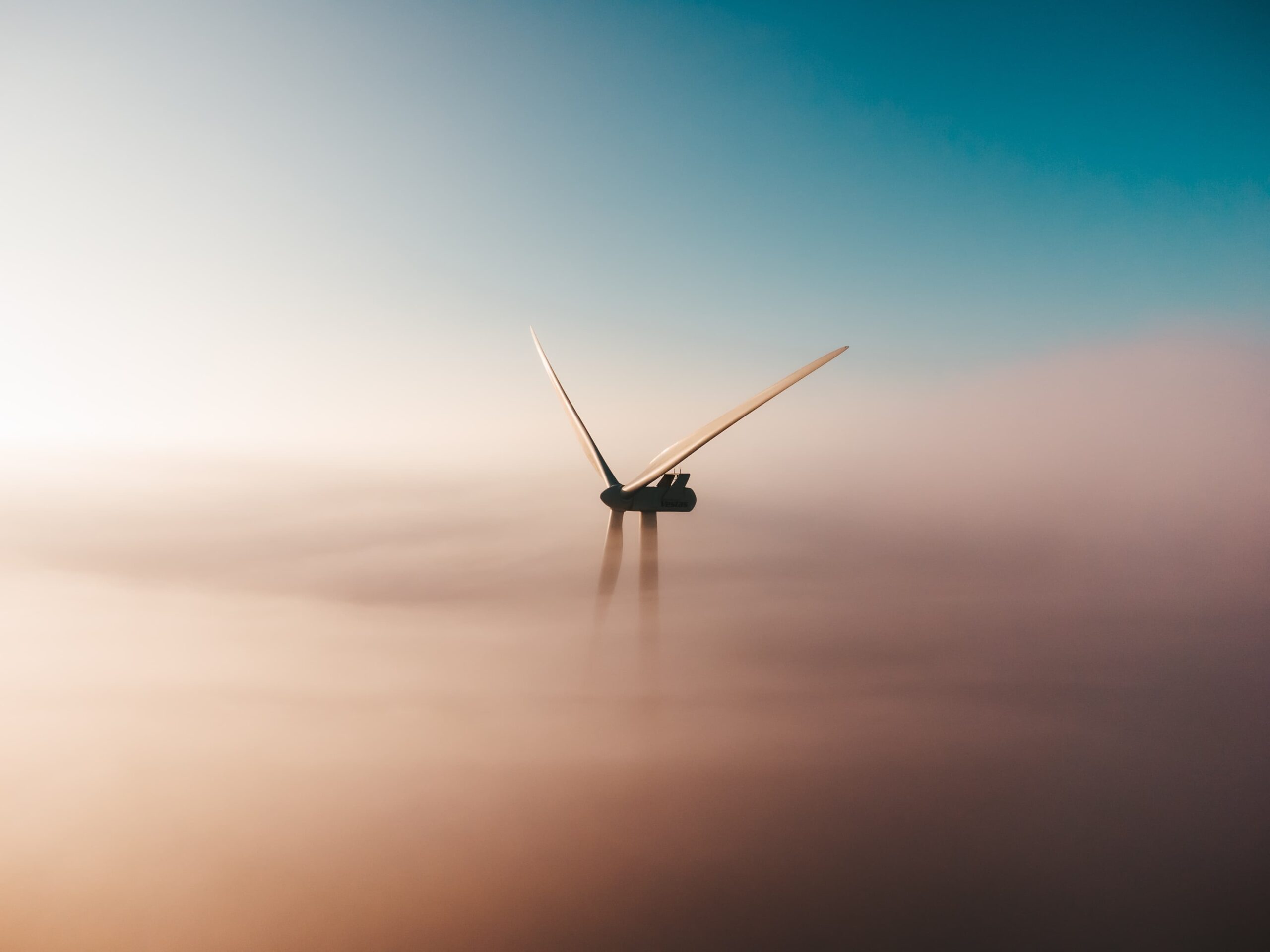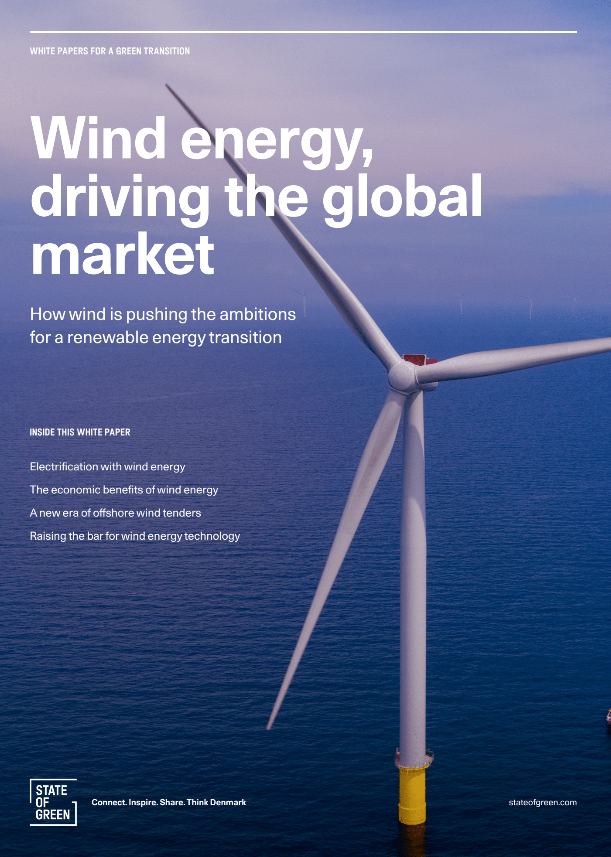Download our publication on wind energy today
This article is part of our publication ‘Wind energy’.
Download nowPerspective
Wind energy
Power-to-x


Wind turbines were initially used in agriculture to grind grains and pump water. But in 1891, the Danish physicist Poul la Cour experimented with wind energy as a source of electricity. Supported by government funds, he created a turbine supplying the school he worked at with direct current. In 1894, La Cour even experimented with wind energy storage transforming electricity from his wind turbine into hydrogen. Danish engineers continued to improve the wind turbine technology during World War I and II to maintain the electricity supply during shortages. By the end of World War I, three per cent of the Danish electricity consumption was covered by wind energy. However, while ingenious, the technological development almost came to a standstill with thejustification that wind turbines would not be able to compete with traditional power plants – fossil fuel prices were simply lower.
The first oil crisis in 1973-74 changed this perception. Highly dependent on imported energy, the early 1970s crisis led to increased electricity costs in Denmark. As a result, wind energy and renewable energy sources re-emerged. The wind industry that arose in the late 1970s was a result of a large public engagement and political goodwill towards wind energy. By the early 1980s, around 20 manufacturers of turbines were active in Denmark, and after a phase of consolidation in the 1990s, the industry became dominated by large, partly internationally owned and listed companies.
Today, the Danish wind industry employs more than 33,000 people with a turnover of EUR 19 billion in 2019. In constant search for more efficiency and lower energy costs, the size of wind turbines has grown steadily over the years. While most turbines in the early 1990s had sizes of up to 225 kW, the newest models reach no less than 15 MW. As a result, the cost of wind energy technology has dropped drastically over the years. Wind turbines are now a highly cost-efficient way to produce electricity. In fact, onshore wind energy is the cheapest source of energy in Denmark and many other parts of the world – outperforming any fossil fuel. Harnessing energy of wind offshore is more expensive than onshore. However, the benefits are a richer and more stable wind resource with fewer neighbour concerns when turbines are installed in open seas. As a first mover in offshore wind, Denmark pioneered the market by installing the world’s first offshore wind farm in 1991. Today, the Danish value chain for both offshore and onshore wind covers a ide range of technologies and services aimed at all phases of wind projects.
As the cost of wind energy continues to drop, its role in the transition of our energy system grows. With that, Denmark invests heavily in electrification. A classic example of direct electrification is replacing traditional fuels with electricity – like electric cars and electric heat pumps. However, there are also indirect paths, such as Power-to-X. Instead of replacing fuel with electricity, electricity is transformed into liquid fuels like hydrogen for heavy vehicles or ammonia for ships.
To support the electrification of the Danish society, the Danish parliament has continuously updated its Energy Agreement. In 2019, it enacted a national Climate Act with alegally binding target of reducing national greenhouse gas emissions by 70 per cent by 2030 (compared to 1990 levels) and reaching climate neutrality by 2050. To reach this target, more wind energy will have to be installed on natural and constructed offshore hubs. The wind industry itself has already started to lay out a strategy to reduce the carbon footprint of its own value chain.
Furthermore, to maintain the stability of electricity supply at 99.99 per cent, Denmark must keep improving the way it integrates the intermittent energy from wind and other renewables through storage and increased collaboration with neighbouring countries.

This article is part of our publication ‘Wind energy’.
Download now